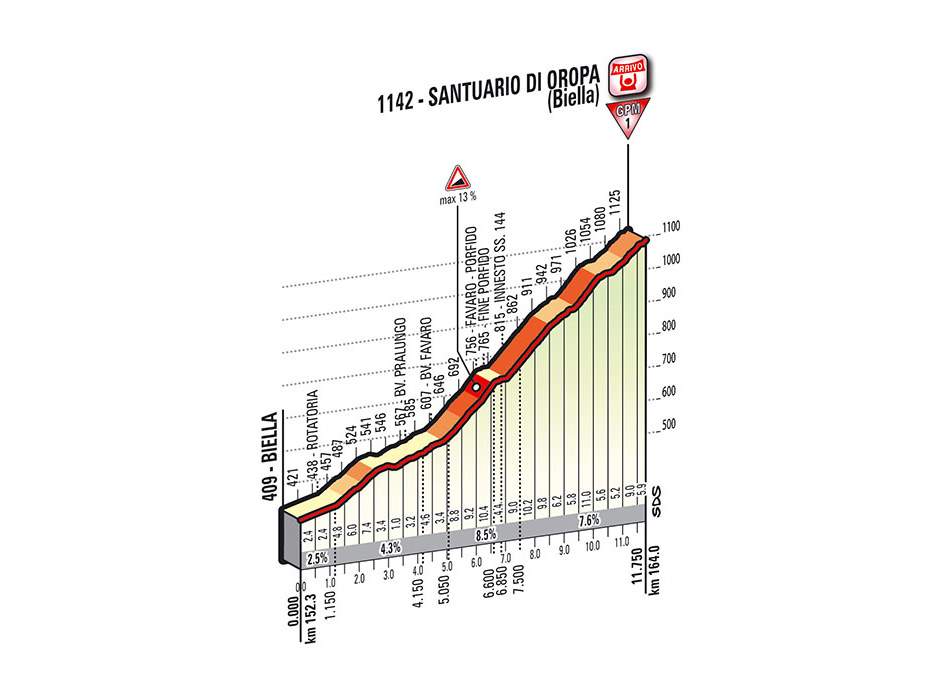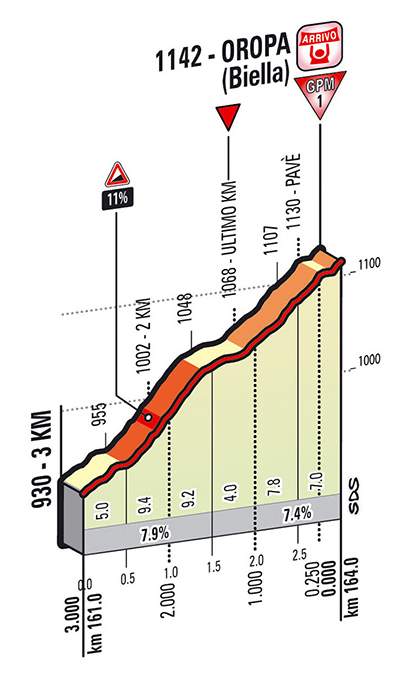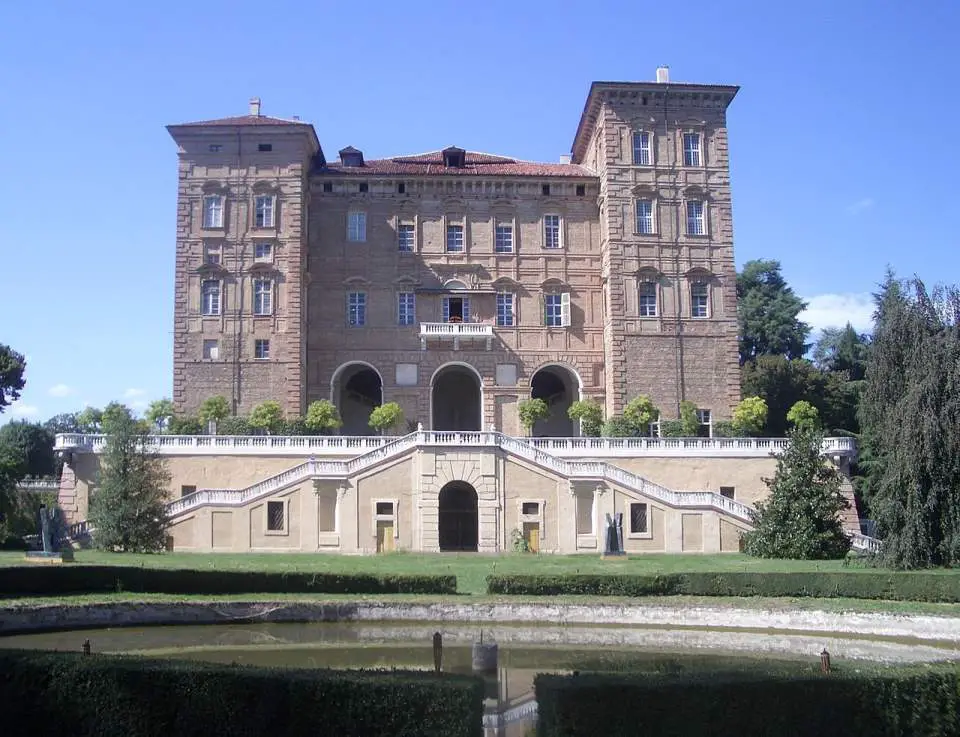Giro d’Italia 2014 stage 14 is a 164 km high mountain stage from Agliè to Oropa. The route contains 1099-meter-high Alpe Noveis and 1482-meter-high Bielmonte climbs. The stage has an uphill finish atop 1142-meter-high Biella.
Giro d’Italia 2014 stage 14 quick info
- DATE: May 24, 2014, Saturday
- STAGE TYPE: High mountain
- START-FINISH: Agliè (345m) > Oropa (Biella) (1142m)
- LENGTH OF THE COURSE: 164.0 km
- DIFFICULTY:


Previous stage: Giro d’Italia 2014 Stage 13 details

Next stage: Giro d’Italia 2014 Stage 15 details
Giro d’Italia 2014 stage 14 profile

Climbs
Alpe Noveis


Bielmonte


Santuario di Oropa

Last kilometers

Giro d’Italia 2014 stage 14 map

Giro d’Italia 2014 stage 14 start: Agliè

Agliè is a comune (municipality) in the province of Turin in the Italian region Piedmont, located about 35 kilometres (22 mi) north of Turin.Agliè borders the following municipalities: San Martino Canavese, Torre Canavese, Bairo, Vialfrè, Cuceglio, San Giorgio Canavese, and Ozegna.
Main sights of Agliè
Agliè’s main attraction is its Castello Ducale, one of the Residences of the Royal House of Savoy, listed in the UNESCO World Heritage Sites list. Dating from the 12th century, originally a possession of the counts of San Martino. In the 17th century, it was turned into a rich residence by count Filippo d’Agliè, but was ravaged during the French invasion of 1706.
In 1765 it was acquired by Charles Emmanuel III of Savoy and sold to his son Benedetto of Savoy who had it radically renewed ten years later, under design by Ignazio Birago di Bòrgaro. Thenceforth it was a summer residence for the Kings of Sardinia. It was sold to the Italian state in 1939.
It has a monumental façade with two stairs and a fountain; the interior includes 300 rooms, mostly provided with contemporary furniture. The castle is surrounded by large English- and Italian-style gardens. It was used as the location for the Italian series Elisa di Rivombrosa as Rivombrosa.
Other sights include:
- Church of Santa Marta: It is a precious example of Baroque architecture, the work of Costanzo Michela, who was also responsible for the construction of the Sanctuary of Santa Maria delle Grazie in Macugnano. The bell tower built with an unusual triangular plan is very particular.
- Parrocchiale di San Massimo: It stands in Piazza Castello, and was designed by Ignazio Birago di Borgaro.
- Church of San Gaudenzio: From 1300 to 1580 it was the Parish of Agliè; on the main altar you can admire the wooden Crucifix, the work of the sculptor Carlo Giuseppe Plura of Lugano (1663-1737); in the second chapel on the right side is the tomb of Guido Gozzano (19 December 1883 – 9 August 1916), the Italian poet and writer.
- Villa Meleto: a 19th-century countryside residence used by Guido Gozzano.
- The Rotonda: On top of the hill stands the Sanctuary of Santa Maria della Rotonda, erected on the remains of a pagan temple, the primitive chapel was rebuilt several times to its present form (late 18th-century).
- Sanctuary of the Madonna delle Grazie: Designed by Costanzo Michela on a pre-existing chapel. It is also known as Tre Ciochè (Three bell towers), as it has a spire and two bell towers.
- Palazzo Facta, or ‘de Pavignano’: Located in Piazza Castello, on the opposite side of the Doge’s Palace, and next to the Parish Church, it is in a poor state of conservation. It belonged to the counts of Bardesono de Pavignano, later passed to the Savoy, the Italian State, and in 2017 to private individuals.
- Agliè silk factory: Built in the 1700s. It rises along the stream that crosses the town; it has an interesting rough side facade, in stone, listed. The eighteenth-century portal on Piazza Setificio is very impressive, where there is also a balance weight still used today.
Giro d’Italia 2014 stage 14 finish: Oropa (Biella)

The Sanctuary of Oropa (Italian: santuario di Oropa), is a group of Roman Catholic buildings and structures in the municipality of Biella, Italy. It is located at a height of 1,159 meters in a small valley of the Alpi Biellesi.
The mountain area surrounding the sanctuary is included in a regional park of 1,518.28 ha (code: EUAP0882) named Riserva Naturale Speciale del Sacro Monte di Oropa.
Sources
- Giro d’Italia official website
- Agliè on Wikipedia
- Sanctuary of Oropa on Wikipedia
- Top 18 fastest Paris-Roubaix editions - April 7, 2024
- Col de Tourmalet [Amazing photo from the 1953 Tour de France] - January 11, 2024
- Bernard Hinault and Francesco Moser, 1981 Paris-Roubaix - December 8, 2023

